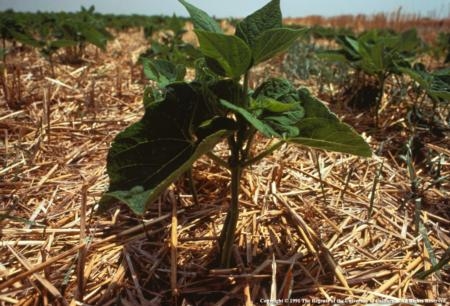
To introduce more valley farmers to the benefits of conservation agriculture practices, Conservation Agriculture Systems Innovation (CASI) produced a six-part documentary featuring California farmers, UC researchers and agency representatives. The series premieres Aug. 6 on the CASI website (http://CASI.ucanr.edu) with a 7-minute segment that lays out the theoretical principles and the scientific basis for conservation agriculture. Additional segments will be released each Monday for five weeks thereafter.
Throughout the series, viewers will meet farmers who are implementing conservation agriculture successfully and profitably on their Central Valley farms. The 6- to 10-minute episodes review the core principles and practices associated with conservation agriculture systems and provide examples of successful local adoption.
After the six-week series airs, viewers, farmers and others interested in conservation agriculture are invited to the UC West Side Research and Extension Center in Fresno County for the annual Twilight Conservation Agriculture Field Day, Sept. 13. The event, which begins at 4 p.m. and concludes when darkness falls, is free and includes a barbecue dinner. Viewers can get clarification on points from the video series and meet many of the farmers and scientists featured in the documentary, plus get a first-hand look at conservation agriculture research currently underway. To register for the Twilight Field Day go to http://ucanr.edu/TwilightRegistration. The West Side Research and Extension Center is at 17353 W. Oakland Ave., Five Points.
“Our goal with the video series is to reach a wider audience of farmers with our research results and on-farm success stories, which show conservation agricultural practices can help make farmers more competitive and sustainable in the long run,” said Jeff Mitchell, UC Cooperative Extension specialist in the Department of Plant Sciences at UC Davis.
The Conservation Agriculture Systems Innovation documentary series includes the following episodes:
Aug. 6: “Introduction to conservation agriculture” – The first video defines conservation agriculture and outlines its increasing credibility in the global context.
Aug. 13: “Maintaining crop residues” – California farmers have tended to adopt “clean cultivation” systems, but research has shown that maintenance of residues from the previous crop or a winter cover crop helps improve soil and reduces evaporation from the surface.
Aug. 20: “Conservation agriculture in tomato production systems” – These systems cut production costs, reduce dust emissions and store more carbon in the soil.
Aug. 27: “Conservation agriculture in dairy silage production systems” – Three dairy farmers committed to conservation agriculture systems in their silage production share their secrets and success.
Sep. 3: “Minimum tillage systems” – This video features examples of a number of reduced pass or ‘pass combining’ tillage systems that have been developed during the past decade.
Sep. 10: “Coupling conservation tillage with overhead irrigation” – Overhead irrigation systems, such as center pivots, are particularly useful when coupled with conservation tillage.
For more information, contact Mitchell at (559) 303-9689, jpmitchell@ucdavis.edu.